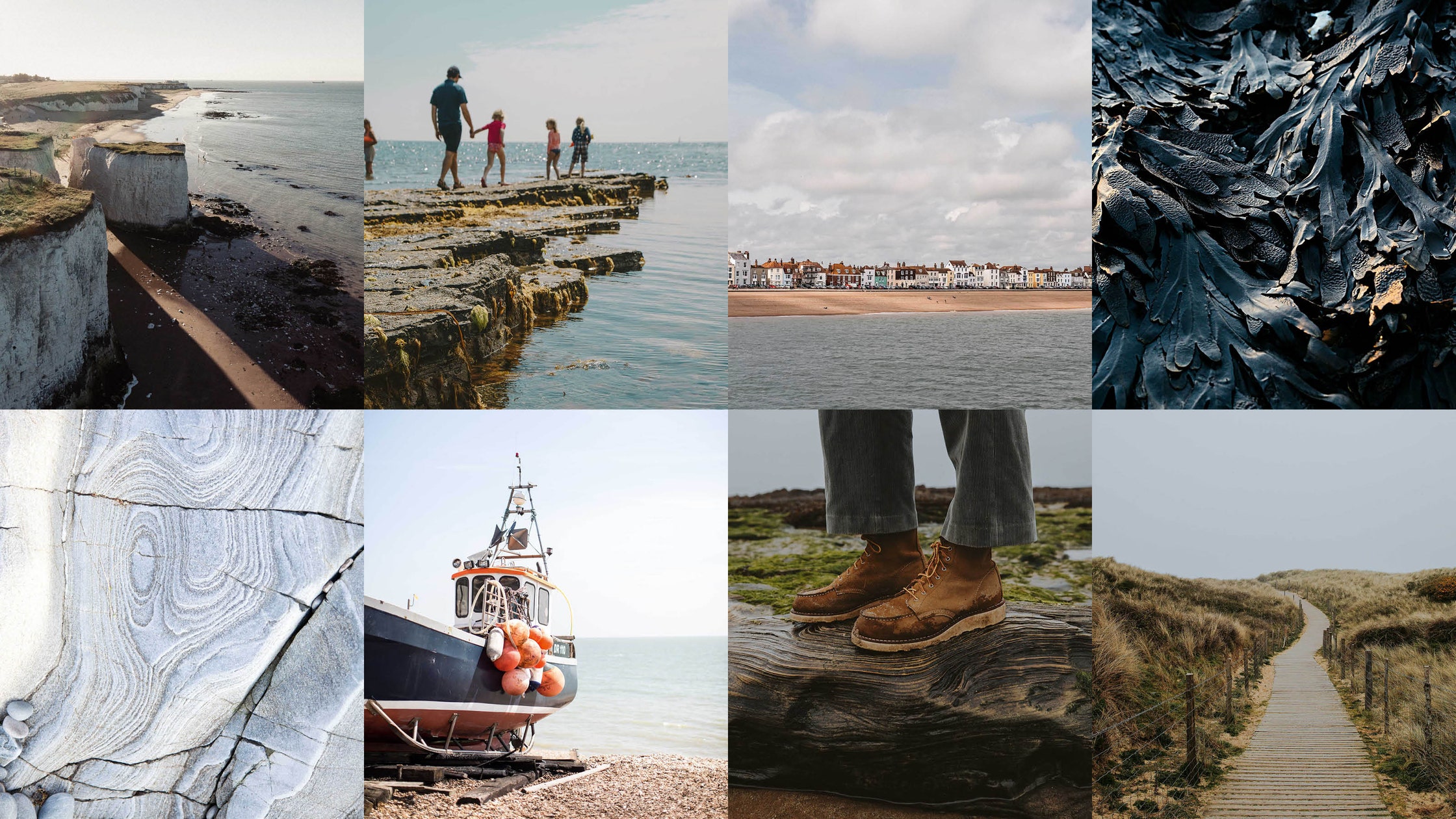Shaped by eternal tidal patterns, Britain’s foreshore is a curious space between the elements for coastal walks and foraging. Kent-based writer Toby Skinner explores its sandy coves and isolated isles.
4 September 2021
Our Top Coastal Walks in the UK
OSEA ISLAND, ESSEX
In the middle of the Blackwater Estuary, with faint echoes of Nantucket and Martha’s Vineyard, sits 380-acre Osea, reachable only around low tide along an ancient Roman causeway. The whole island is owned by the record producer Nigel Frieda, and London’s bright young things often rent out the clapboard Captain’s House, all slouchy brown leather sofas, wooden beams and freestanding baths overlooking the water. However, the real appeal lies in nature – which is why the team from a sustainable restaurant called Native heads here to gather Blackwater oysters, sea buckthorn, and sea kale.
YNYS GIFFTAN, WALES
Few places in the UK do tidal drama like this lush uninhabited isle surrounded by a vast tract of sand in Gwynedd’s Dwyryd Estuary, near Portmeirion. Access is limited to three hours either side of low tide – the departing waves leave swimmable pools, sun-warmed for the ultimate wild-bathing experience. As you walk back to the road, you’ll pass salt marshes rich with samphire and wildlife, flanked by the mountains of Snowdonia.
STUDLAND BAY, DORSET
A white-sand crescent surrounded by the chalk cliffs of the Jurassic Coast, this is one of the best places in Dorset for low-tide foraging. Fore/Adventure, run by ethnobotanist and bushcraft instructor Dan Scott and his partner Jade, organizes shore walks and kayaking trips to search for sea blight, spider crabs, razor clams, and cockles to cook up on the beach with Dan’s portable barbecue.
ST NINIAN’S ISLE, SCOTLAND
Britain’s northernmost archipelago is packed with epic corners shaped by the seas. Perhaps the most atmospheric is St Ninian’s, reached by the UK’s largest active tombolo—an egg-timer-shaped stretch of fine sand that slowly disappears as the tide rises. The isle itself makes for a great walk beyond the marram grasses to rocky lookouts and views up Shetland’s west coast.
ERRAID, SCOTLAND
There’s a certain romance to this tiny speck off the south-west coast of Mull, which can be walked to at low tide (Erraid roughly translates as tidal island in Old Gaelic). The stunning David Balfour’s Bay takes its name from Robert Louis Stevenson’s Kidnapped, and the pink granite under the water at the Tinker’s Hole anchorage glows on sunny days. The island has been managed by the Findhorn Foundation for over 40 years, where guests can stay in stone cottages first constructed for the lighthouse keepers.
GUGH, ISLES OF SCILLY
Off pretty St Agnes, the most southerly inhabited point of the Isles of Scilly, tidal Gugh feels more remote with just two houses. Accessible only at low tide via The Bar, a lovely tombolo with strikingly turquoise water on either side, this is a place of Bronze Age cairns and ancient burial sites. A walk up Kittern Hill, its highest point, leads past the Old Man of Gugh standing stone and Obadiah’s Barrow, a Neolithic entrance grave.
Kent-based writer Toby Skinner on the joys of the UK’s best coastal walks, and the foreshore – the slip of land between high and low water:
In my new home of Margate, my daily walk or cycle along the beach is both the same and ever-changing. Sometimes, great growling waves assault the sea wall, hurling cascades of spray over the old mosaic lido sign. Other times, the ocean is distant and becalmed – the harbour arm looking out over bare rippled sand.
I’ve become fascinated with the foreshore, this barely knowable intertidal zone of chalkstone and periwinkle, between low and high water on the beach. The world between the tides is a place where humans are still outsiders, a landscape I’ve heard described as Britain’s last wilderness.
The rock pools that run from Pegwell Bay in the south to Herne Bay to the west house various marine life, including mussel beds and rare stalked jellyfish. Seaweed, from bladderwrack to sea lettuce, is abundant, providing foraging grounds for both humans and migrating birds such as turnstones. The tide brings in curious ‘boring bivalves’, which carve holes worthy of German engineers in the stones at Botany Bay.
If the foreshore seems misunderstood, so too is the tide that shapes it – a curiously abstract process governed by celestial bodies, yet so reliably predictable that it’s possible to forecast high tide in any location for millennia ahead. The real appeal of the foreshore lies in the experiences it offers, allowing exploration of its rock pools and damp sand, but ultimately, we must wait for each tide to reveal its secrets.




